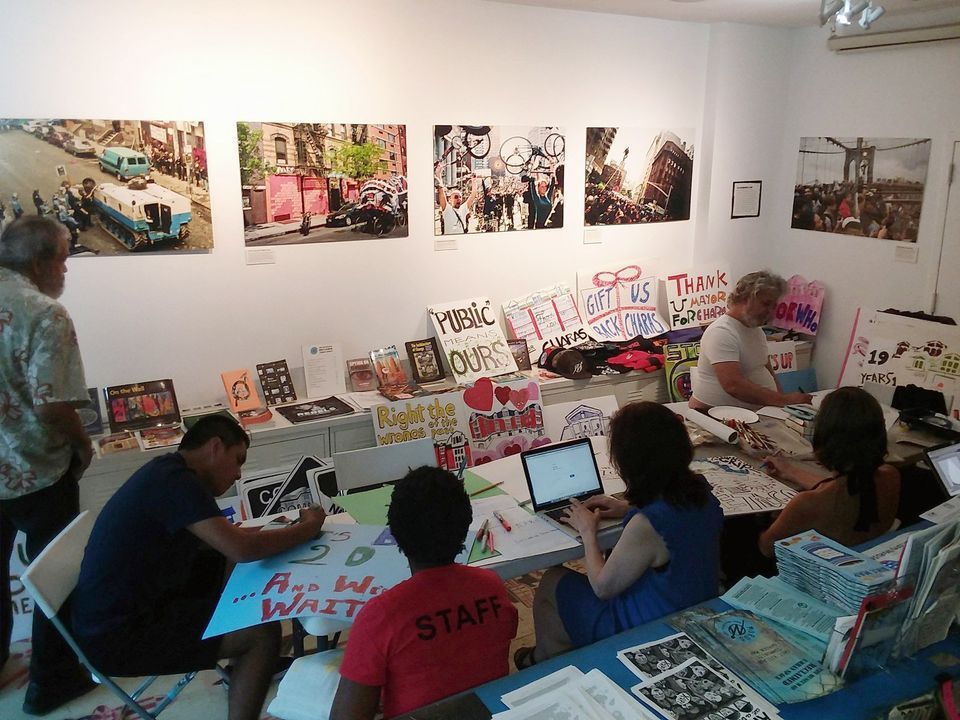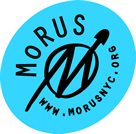Visiting the Museum
Q: When can I visit the museum?
A: We are open Wednesday through Sundays from 12pm to 5pm.
Q: How much does it cost to visit the museum?
A: We ask for a $5 suggested donation to visit our exhibition space. Tours are $20 per person.
Q: How much time should I allow to visit the museum?
A: It’s up to you! Our exhibition space consists of the storefront and the basement, and could be perused for just a few minutes or as long as a few hours.
Q: I want to take a guided tour. What do you offer?
A: We offer guided neighborhood tours every Saturday and Sunday at 3pm. Admission is $20 and the tours visit community gardens, squatted buildings, other sites of historical interest, and Tompkins Square Park. If you want to book a custom, private tour for a larger group (8 or more people), email our director at billtimesup@gmail.com.
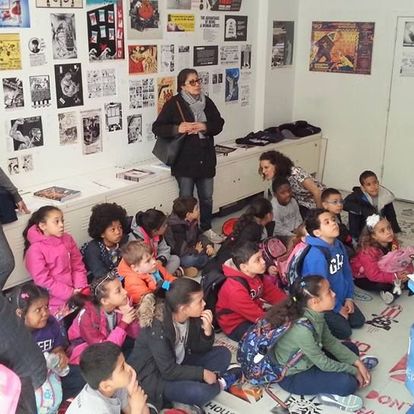
About the Museum
Q: What does “MoRUS” mean?
Check out this blog post!
Q: How did you come up with the idea for this museum?
A: There was an urgent need to preserve documents that had been collected about the history of squatting, community gardening, and activism in the neighborhood. The museum was conceived as a way to reclaim the history of activism that has pressured the city into making sustainable changes.
Q: When did the museum open?
A: We opened on Saturday, December 8th, 2012.
Q: Is there any other museum like this?
A: We are one of a kind! However, there are a few similar institutions. The Lower East Side Tenement Museum tells the history of the neighborhood’s working-class, immigrant history that predates the period we deal with. At Christiania in Copenhagen, Denmark, Europe’s largest squat, squatters give historical tours. And Australia has an online museum of squatting – the Australian Museum of Squatting.
Q: Do you have a membership program? What are the benefits for members?
A: Yes! Visit the membership section of our website for more information.

The Neighborhood’s History
Q: What is a squat? Are they legal?
A: A squat is a building that people live in without the consent of the building’s owners. Squatters identify abandoned buildings and move into them, often fixing them up and staying for several years. Squatting is not legal. When people began squatting on the Lower East Side in the 1970s and 80s, most of the hundreds of abandoned buildings were owned by the city.
Q: What is the difference between squatting and homesteading?
A: Homesteading is essentially legitimized, and therefore legal, squatting. In the 1970s and 1980s the federal government launched several homesteading programs geared toward low-income neighborhoods with deteriorating housing conditions, including on the Lower East Side.
Q: Why were there so many squats and community gardens on the Lower East Side?
A: In the 1970s the housing stock of the Lower East Side was in a state of rapid deterioration. Landlords began abandoning their properties en masse. The city became the owner of hundreds of properties through tax foreclosure, but it did not have the resources to manage these properties. Residents and activists of the Lower East Side began reclaiming vacant buildings for people to live in and empty lots to grow food in.
Q: Is this the East Village or the Lower East Side? What about Alphabet City? And Loisaida? Why so many names?
A: This neighborhood has been called the Lower East Side, Alphabet City, the East Village, and Loisaida! Historically, the Lower East Side stretches from 14th Street and then south all the way to the East River. Beginning in the 1960s with an influx of bohemian types to the neighborhood, it began to be known as an extension of Greenwich Village and thus the East Village. Alphabet City refers to Avenues A through D. And Loisaida was coined as real estate interests began to use the name East Village to further gentrification in the neighborhood. Nuyorican poets from the neighborhood coined Loisaida (LO-EES-EYE-DAH) as a Spanglish connection to the neighborhood’s working-class and immigrant history as the Lower East Side.
Q: Did people really buy their buildings for one dollar?
A: On August 19th, 2002, the city sold eleven remaining squats in the neighborhood to the Urban Homesteading Assistance Board [UHAB] for the symbolic price of one dollar.
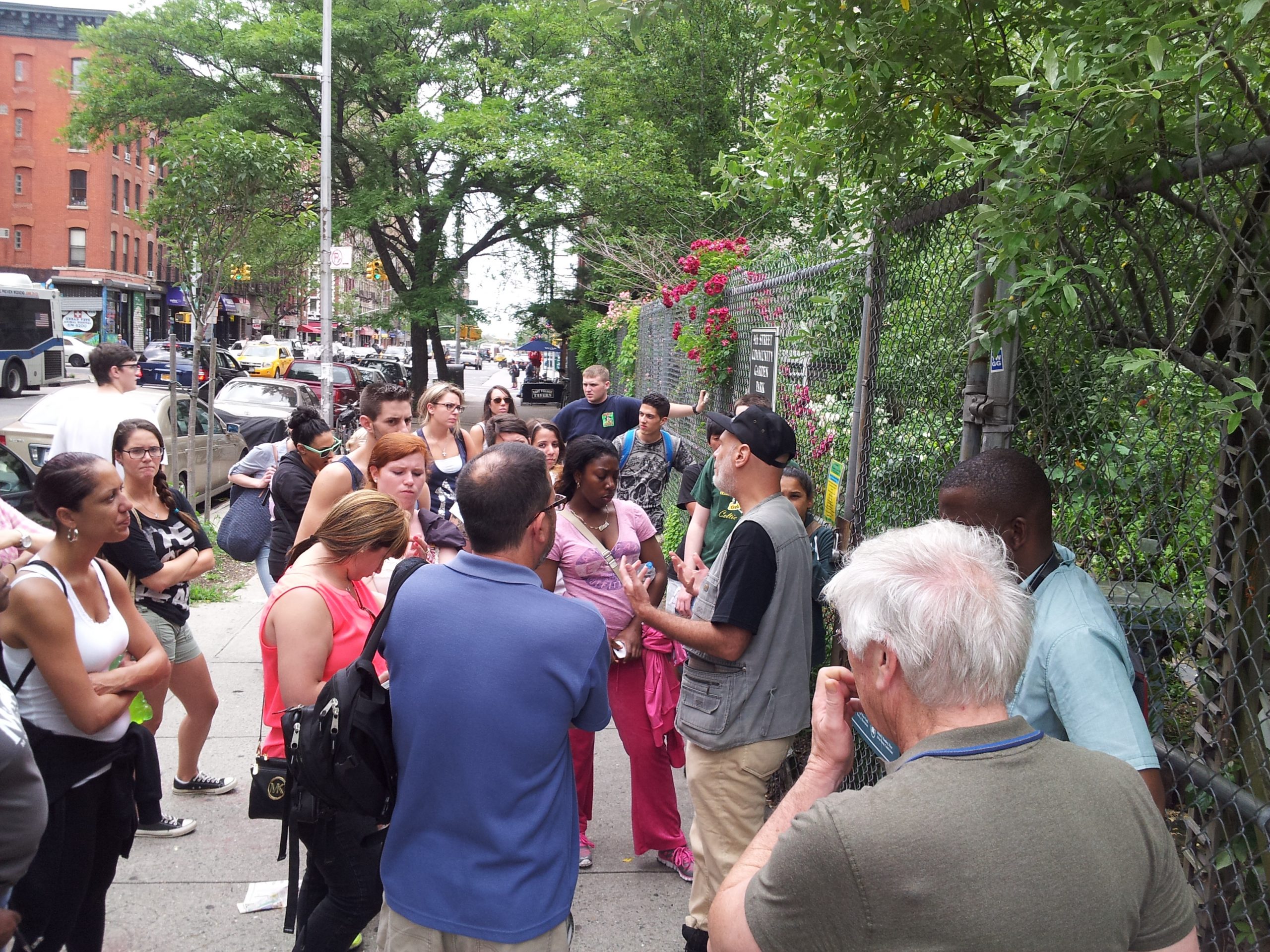
The Neighborhood Today
Q: Are there still squats on the Lower East Side?
A: Yes and no. Most of the historic squats in the neighborhood were evicted or demolished in the 1990s. However, after the city sold the eleven remaining squats to UHAB (see question about selling buildings for one dollar above) in 2002, these remaining buildings began the process of transforming into legitimate low-income housing cooperatives. Technically, this means that they are no longer squats. Most of them, however, are home to original squatters and the legacy of squatting in the neighborhood lives on through these buildings.
Q: When are the community gardens open?
A: The gardens are each operated separately. Depending on the garden, they may have open hours and/or be open when garden members happen to be present. At the museum, we sell both a book with history and information about the gardens ($20) and a garden map with visiting information for each of the gardens ($5).
Q: I want to join a community garden. How could I do this and how much would it cost?
A: Most gardens require small fees and/or volunteer commitments to become a member. Inquire with the individual garden that you are interested in for more information.
Q: Do people still squat in New York City?
A: Yes, but squatting looks very different in the New York City of today than it did in the 1980s and 90s. Today, most vacant buildings are held privately instead of being city-owned and many are the property of banks. As a result, squatting in the city today is very difficult and much more discreet than it was on the Lower East Side.
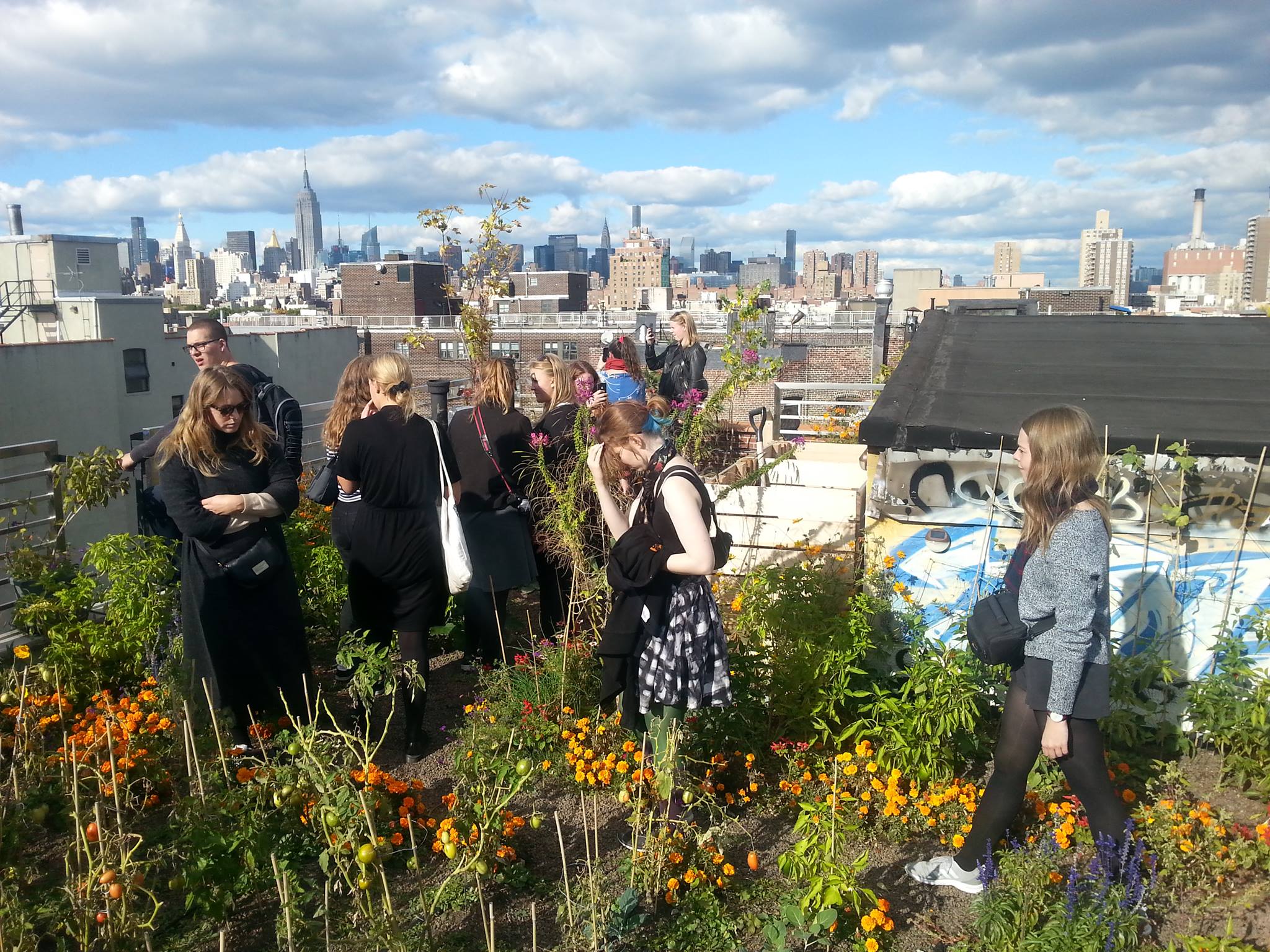
Inquiries
Q: How can I get involved?
A: We are always looking for volunteers! We need people to help staff the museum and to get involved with all of our projects. Email our director at billtimesup@gmail.com.
Q: Do you offer any internships?
A: Yes! We are (almost) always looking for interns. You can browse our internship listings here on Idealist.
Q: Are you hiring?
A: No. We are a volunteer-run organization.
Q: I have old pictures/documents/etc from the neighborhood. Do you want them?
A: Maybe, if it fits our collections policy (between the years of 1973 and 2013, Lower East Side/East Village specific, and it clearly fits into our mission as a museum). We accept 4 copies maximum of archival materials.
Q: I work with an organization that would love to collaborate/use your space. Who can I speak with?
A: Contactour director at billtimesup@gmail.com.
Q: I am an artist/bookseller/etc and I would love to sell my paintings/books/etc at the museum. Who can I speak with?
A: Any art, books, or other merchandise that we would consider selling must be appropriate to the museum’s mission. Stop by and peruse our merchandise to see if your items would fit or contact our director at billtimesup@gmail.com.
Q: I would love to make a donation to the museum. How do I do it?
A: Thank you! You can see donation options here.
